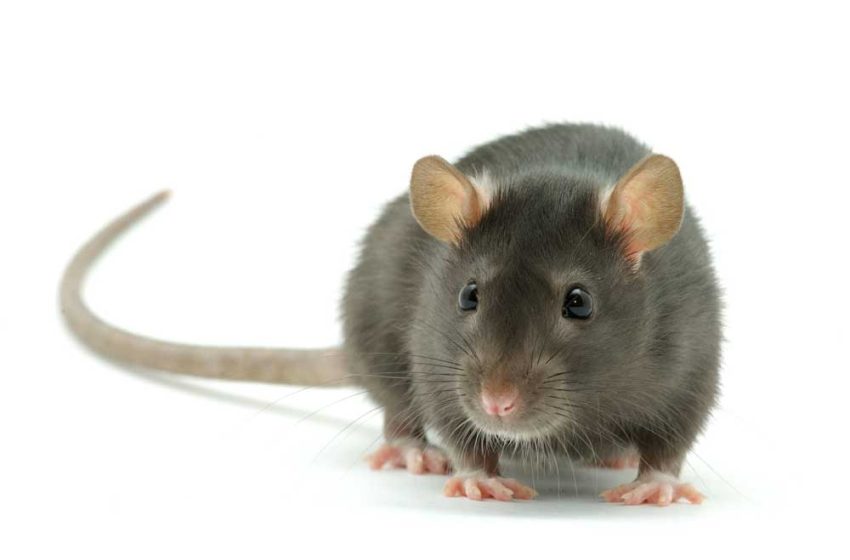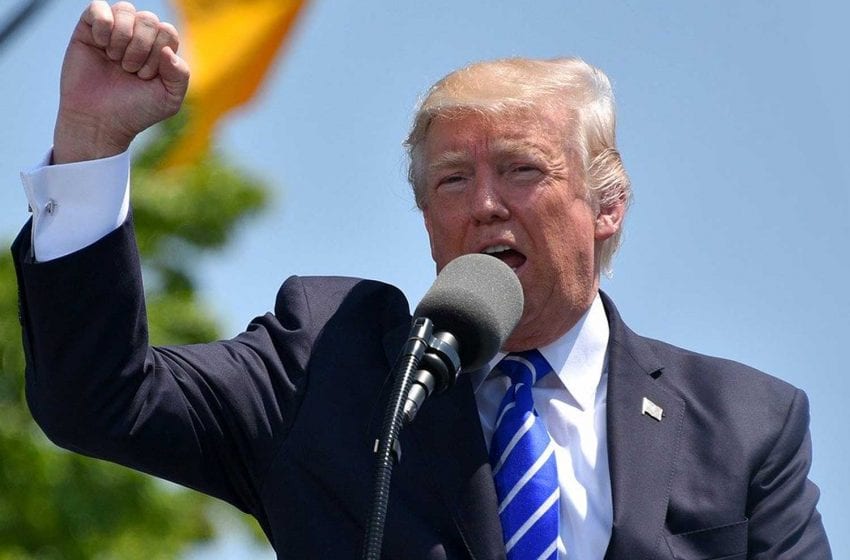
Animal studies are not needed to obtain U.S. marketing authorization.
By George Gay
Obtaining U.S. marketing authorization for a vaping product does not require carrying out studies involving nonhuman animals (NHAs), so the question arises as to why such studies have been undertaken on behalf of some vape manufacturers—a question that is brought into sharp focus given these studies are financially expensive and, in my opinion, morally demeaning and inherently cruel.
Let’s be clear, the U.S. Food and Drug Administration, to which premarket tobacco product applications (PMTAs) have to be made in respect of what it refers to as electronic nicotine-delivery systems (ENDS), does not require that applications include the results of such studies. Indeed, I am led to believe that the FDA has approved applications that have not included such results.
And it needs to be emphasized that I am talking here only about studies carried out in respect of consumer lifestyle products. These NHA studies are not being used as part of a quest to find a cure for or relief from disabling medical conditions suffered by humans, which some might argue would lend them moral weight. They are being carried out in respect of a product some people choose to use. They are being carried out for reasons I find unfathomable and indefensible, especially given that some of the manufacturers that will have caused them to be undertaken expend considerable efforts on publicly burnishing their otherwise extensive ethical codes.
How, it is reasonable to ask, can a corporation, regarded in law as a person, countenance such studies? An NHA, being sentient, has moral status, and a person has, as well as moral status, moral agency: moral responsibility in respect of those with moral status, including NHAs. And this comprises an important principle to defend because those with moral status but no moral agency also include children.
And it is important to bear in mind that these NHA studies are not being carried out to determine whether vaping is safe. Nobody could believe that inhaling anything other than unadulterated air could be anywhere near safe, though it is generally accepted, even by the FDA, that replacing smoking with vaping reduces consumers’ exposure to harmful and potentially harmful constituents and the risks consumers run. Also, most of the products for which applications have been made had already been on the market for a considerable time—time enough to determine that they were unlikely to raise acute medical issues.
No, the results of such studies and others are currently used to allow a decision to be made on whether the product being tested is appropriate for the protection of public health (APPH) in general. According to the law, the FDA must consider the risks and benefits to the whole population, including both tobacco users and nonusers, taking account of the increased or decreased likelihood that existing users of tobacco products will stop using such products and the increased or decreased likelihood that those who do not use tobacco products will start using such products.
In other words, APPH is about taking a utilitarian approach; it is about trying to ensure the maximum good for the maximum number of people. So far, so good. But, like utilitarianism, APPH has a basic problem because it requires foretelling the future, something that is not within our power. In part, it requires FDA scientists to foretell the destructive habits that, in the future, the young will decide are fashionable or not and so take up or discard.
In any case, I believe that most reasonable people would view as cruel the way NHAs are treated when forced to take part in vaping studies. And I hope they, including smokers and vapers, will have the moral fortitude to demand the studies be stopped. That they have not done so in the past could, I suppose, be down to ignorance, real or feigned, of the methodologies used.
Well, if you are ignorant of these methodologies and want to remain so, best look away now. According to one methodology, the NHAs are first quarantined and acclimated to the laboratory where they are housed in polycarbonate cages with hardwood bedding. Then, for up to six hours on five consecutive days, they are subjected to conditioning in nose-only exposure restraint tubes, which are made of polycarbonate tapered on one end to the approximate shape of the NHA’s head, which are too narrow to allow the NHA to turn around and which are capped at the other end.
Once acclimated, the NHAs, unless moribund or already terminated, spend up to six hours a day for up to 90 consecutive days trapped in this manner, where they are forced—the methodology uses the word “permitted”—to inhale aerosols, vapor, controls (filtered air or “vehicles” without nicotine and/or flavors) or cigarette smoke (for comparison), depending on the group to which they are assigned. The design of the tubes is such that the NHAs breathe the test atmospheres with minimal whole-body “surface” contamination, which, from a scientific perspective, is helpful because whole-body exposure complicates the interpretation of findings that in such cases include the effects of dermal and oral exposure due to grooming. From the perspective of the NHAs, however, the design is hurtful, because it is about tightly jamming them into the tubes, with predictable, crippling results.
What then happens to the NHAs can be summed up by some of the phrases used in the methodology: “ophthalmic examinations”; “exsanguination”; “animals scheduled for necropsy”; “moribund animals”; “scheduled termination”; “found dead or humanely terminated.” Or, being a little more specific: “… [b]lood for hematology and serum chemistry analysis was collected via the retro-orbital [behind the eye socket] plexus ….”
It is important to keep in mind that these studies and outcomes, which invariably end with the NHAs being killed and dissected and their organs sliced and examined, are being carried out on and suffered by NHAs that derive no benefit from their suffering. They are treated as a resource—as if they had no intrinsic value. Indeed, leaving aside economic outcomes, it is difficult to see who does benefit from these studies, though it is obvious that many are diminished by them.
Meanwhile, the stress levels of the NHAs under study must go through the roof, as is evidenced by the sorts of outcomes awaiting them after being so constrained: “lacerations on left forelimb”; “continued lameness”; “difficulty in ambulating with front limbs”; “left elbow and left forelimb observed to be swollen”; “found to be in a hunched posture with labored, noisy breathing”; observed to have dried red discharge around the nostrils”; “deep abrasions on the caudal aspect of both tarsal joints”; “worsening condition and unalleviated pain”; “found dead on Study Day 79,” or, more specifically: “All of the moribund terminations … observed during the study appeared to be exposure related and can be attributed to animal activity in the nose-only restraint tube in response to increasing aerosol concentration.”
Some NHA studies were carried out in respect of cigarette smoke. These were comparative studies, undertaken even though it is obvious that just one person switching from smoking to vaping would, of itself and with no other factors present, shift the dial of public health positively—albeit by a quantum amount. Anyway, the following gives an idea of how the NHAs came out of the smoke-exposure studies: “The observations of discolored ears, nasal discharge, rough coat, respiratory abnormality, decreased activity, mouth discharge, swelling and limb weakness are considered test-article-related findings,” we are told.
I simply don’t understand how a scientist could accept that study results, obtained as they are by forcing a creature the size of a rat to inhale for hours at a time huge amounts of vapor or smoke while being held under intolerably stressful conditions, could in any way inform a debate about the effects that might be suffered by your average vaper or smoker out on a bright morning for a coffee with friends. That, of course, comes from my unscientific perspective, but many years ago, the director of Europeans for Medical Advancement wrote that NHAs were doomed to fail as experimental models of Homo sapiens. “The human genome project has revealed that small genetic variations between species create profound biological differences that preclude extrapolation from one species to another,” she wrote. “Studying dogs and rodents to elucidate human disease is archaic: The cutting edge of science today is focused on variations between individual people at the level of snips (single nucleotide polymorphisms).”
“Archaic?” So why are such NHA studies still carried out and still, I am told, regarded by some as being the “gold standard”? My guess is that it is down to the inertia that plagues our species, wedded as it is to dragging behind it the burden of history and tradition. The tobacco/nicotine industry carries an especially heavy historical load, and scientists are far from immune from such burdens. As Thomas S. Kuhn once wrote, scientists are creatures of tradition: They aim to conserve and extend tradition, not to overthrow it, and revolutionary change—when it occurs—is the product of conservative impulses running up against obdurate evidence.
Of course, while I have examined the way NHAs are used, I have not looked at how many of these unfortunate creatures have been, in my view, mistreated in pursuit of the protection of public health. And this is where it gets difficult because the FDA does not count the number of NHAs subjected to studies, and so no overall figure is made public. But it is possible to take a stab at it. I know from information obtained from the FDA through a freedom of information application (FOIA) by Joseph Manuppello of The Physicians Committee for Responsible Medicine that applications in respect of 10 products resulted in studies being carried out on about 2,400 NHAs (some were 14-day studies, others 90-day studies); so, more than 200 animals per individual product. It is also known that the FDA received applications in respect of more than 9 million products.
But care must be taken here. Manuppello, who obtained nearly all the information contained in this story and who attempted, not always successfully, to keep me on a scientific path, was at pains to point out that, for various reasons, it was unlikely that animal studies were carried out in respect of many of those 9 million applications. This is an important point to make, but it is similarly important to add that even one study is too many.
Finally, if your company is still wavering on the question of animal studies in respect of vape product PMTAs, it might be reassuring to note something indicated in publicly available documents and in information Manuppello was able to establish through information he obtained via his FOIA on successful PMTAs made in respect of similar products owned by two companies. One of the companies submitted the results of animal studies with its PMTA; the other apparently did not and in not doing so provided evidence that animal studies are not needed for FDA approval (Table 1).
Surely, this points up a moral imperative and at least two opportunities. It means that, if it has the competence to do so, the FDA ought, as a matter of urgency, to change its position on animal studies by saying it will not consider the results of such studies, something that would surely make the PMTA process more efficient. At the same time, such a stance would save manufacturers the financial and moral burden of having such studies conducted on their behalf while allowing those that qualify to promote their products, in so far as they can, as “not tested on animals.”
In fact, if there are any U.S. consumers reading this piece, they might like to consider writing to the manufacturers of their favorite vapes to ask them if those products or any of their constituent parts were or will be tested on animals. And while U.S. readers are in the letter-writing mode, they might like to write with their thoughts on vape product animal studies either to the Center for Tobacco Products’ director, Brian King, or its Office of Science director, Matthew Farrelly (CTP Leadership | FDA).
I genuinely believe they would like to hear from you.
Number of NHAs Used to Test ENDS and Combustible | ||||
Products Tested | 14-Day | 90-Day | In Vitro | TOTAL |
Logic VapeLeaf Regular Tobacco | 47 | 196 | – | 243 |
Logic VapeLeaf Menthol Green | 47 | 196 | – | 243 |
Logic VapeLeaf Menthol Purple | 47 | 196 | – | 243 |
Logic Power Regular Tobacco | – | 196 | 0 | 196 |
Logic Power Menthol | – | 196 | 0 | 196 |
Logic Power Cherry | 55 | 196 | 0 | 251 |
Logic Pro Tobacco | – | 189 | 0 | 189 |
Logic Pro Menthol | 55 | 189 | 0 | 244 |
Logic Pro Cherry | – | 189 | 0 | 189 |
Logic Pro Berry Mint | – | 189 | 0 | 189 |
Pall Mall Red Kings (for Logic) | – | 210 | 0 | 210 |
Njoy (7 ENDS products, redacted) | – | – | 0 | 0 |
Total NHAs Used | 2,393 | |||












